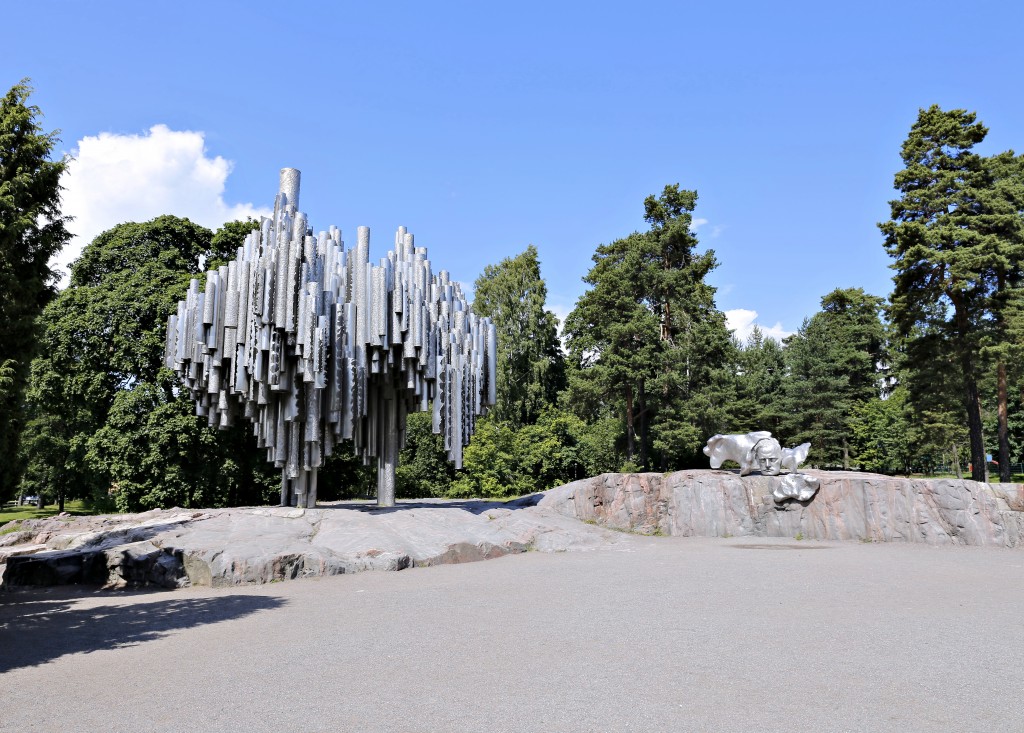Music education in Finland
Finland, the home of Sibelius, Santa Claus (so some claim) and more saunas per head than anywhere else in the world, is a country of extremes and contrasts. As cold, dark winters give way to endless scenic summer nights, the notoriously introvert – yet warm, embracive society – comes to life.
‘The land of a thousand lakes’ is often seen as a country where things are done right: a champion of equal rights, social mobility and comprehensive welfare, all administered by a government recently named the least corrupt in the world in the Corruption Perceptions Index.
But when it comes to national pride, there is perhaps one accolade that Finns hold dearer to their hearts than beating Sweden in the 2011 Ice Hockey World Championships – and that is their world-renowned education system.
Finland has consistently topped the global education rankings for the past two decades, with their core principles of equality and highly personalised learning upheld as a source of inspiration worldwide.
Teachers in charge
Finland does not operate on any notion of a top-down, ‘one size fits all’ education policy. Highly qualified, respected teachers call the shots – not exam boards, bureaucrats or school inspectors. All teachers must have a master’s degree with specialised pedagogical training to teach, and the state places complete trust in teachers to develop a highly personalised curriculum to get the best from every student.
 Children do not begin school until the age of seven Photo: Michal Knitl/Shutterstock
Children do not begin school until the age of seven Photo: Michal Knitl/Shutterstock
For an outsider, day-to-day life in a Finnish school may seem more like a holiday camp than a world-class education establishment. Children do not begin school until the age of seven; they receive little, if any homework until their teens; no child is formally tested at all during their first six years of education and then there is only one standardised national test at the age of 16.
Unlike in Britain, essentially no extra-curricular activities take place within Finnish schools. With the average Finnish seven-year-old heading home at midday (having had at least 90 minutes of playtime), children spend their afternoons enjoying their own hobbies and interests outside school.
The short Finnish school day allows children plenty of time and space to really immerse themselves in extra-curricular activities, which are seen as an integral part of a child’s educational development. As such, these activities must be accessible, diverse and adhere to society’s wider educational principles: perhaps nothing demonstrates this better than the country’s system of music schools.
More than 100 music schools, from Helsinki in the south to Lapland in the north, come under the umbrella of the Suomen musiikkioppilaitosten liitto, the Finnish Music School Association (SML). Although its membership includes Finland’s 15 conservatoires (for a country of only 5.5 million people), the organisation’s main remit is to oversee the activities of Finland’s extensive network of music schools for children up to the age of 18.
Never too early
Finns believe that no child is too young to begin their relationship with music. According to the Music School Association, there are around 67,000 students enrolled in the music school system, with some 36% involved in early childhood education (those below the school age of seven).
Finland’s 90 music schools offer an immensely diverse range of activities, ranging from folk music to jazz, Suzuki, orchestra, chamber music and even classes for mothers with newborn babies.
At an appropriate age for their instrument, children can audition (or if they are complete beginners take an informal musicianship test) to receive instrumental lessons and enrol on the main music school programme, which can eventually lead to the music school diploma.
In addition to instrumental lessons – available on almost any classical or folk instrument – students also receive a complete musical training programme consisting of theory, ear training, music history and ensemble projects, similar to an expanded version of the Saturday junior programmes offered by UK conservatoires.
The structure of the main diploma consists of four levels: levels 1-3, followed by the Music School Diploma. In order to progress to the next level, students must not only pass the appropriate instrumental exams, but also have attained a certain level in other classes such as music history or ear training.
Although very structured, the whole programme is designed to be as flexible as possible around each student’s individual needs. There is no age limit or timescale to complete each level and many students leave the music school without attaining the diploma. The overall aim is to develop well-rounded musicians, not just fine instrumentalists.
Instrumental assessment
When it comes to instrumental exams, Finland’s unique approach serves as a fine example of society’s wider pedagogical principals in action. Unlike in many countries, ABRSM and Trinity Guildhall have not gained a foothold in Finland – and many within the Finnish music education community are keen to keep it that way.
As you will have gathered, the Finns are not big fans of regulated assessment, and music exams are no exception. Indeed, such is their preoccupation with ensuring music exams are seen as a ‘performance’ rather than an ‘exam,’ the word has recently been removed from the syllabus altogether.
The structure of exams – or ‘levels’ as they are now known – very much depends on the instrument and ability of the student, but generally speaking, they consist of a study, accompanied piece, scales and another instrument-specific component, which might include chamber music, free accompaniment or improvisation.
 Finland is known as ‘The land of a thousand lakes’. In fact there are more than 185,000
Finland is known as ‘The land of a thousand lakes’. In fact there are more than 185,000
Photo: Dariya64
Essentially, there is a free choice of repertoire in exams, with teachers trusted to decide the most appropriate repertoire for each student. Although the SML publishes a very long, comprehensive repertoire list for each level and instrument, this is only a guide and everything is flexible.
Although overseen by the SML, all exams are handled ‘in-house’ with individual music schools organising their own exam schedules and panellists. Teachers are also encouraged to attend their students’ exams and sit alongside the panel, which usually consists of at least two people with one instrument-specific teacher.
If a student is playing in a concert, it also possible for the panel to sit in the audience and treat their performance as part of the exam, with students taking the other elements of the exam at a later date.
After the exam, students immediately sit down with the panel to receive verbal feedback, as well as discussing their progress and future plans – something that also takes place after university and conservatoire recitals.
Additionally, no marks are awarded at all until the later grades; and even when they are, the marking criteria is not standardised, with every panel across the country free to award the marks they see fit depending on each students’ personal circumstances. Once again, trust in teachers is key.
Possible downsides
Moving outside the music school, another major difference between Finnish music education system and our own is that there is no real equivalent to our GCSE and A-level music exams. All Finnish children – whether or not they are enrolled in the music school – receive compulsory classroom music lessons at primary school level, which they may opt to continue at secondary school. At 16, students may also apply to one of Finland’s 11 specialist music-orientated upper-secondary schools (equivalent to our sixth form colleges) but despite this, there are still no formal, ‘academic’ music qualifications available.
 Helsinki’s Sibelius Monument – Photo: Michal Knitl/Shutterstock
Helsinki’s Sibelius Monument – Photo: Michal Knitl/Shutterstock
The only real possibility is to take the music school diploma, which is fine if you have a place in the music school – but unfortunately, not everyone is so lucky. Many music schools, especially in bigger cities, are heavily over-subscribed and only half of applicants are admitted each year.
With some children auditioning as young as five – along with no real opportunities to learn an instrument in normal school – there is a danger that those not accepted will become disheartened and abandon their musical studies early on, despite the best efforts of music schools to try to accommodate everyone.
One could say this goes against Finland’s entire educational philosophy of equality and accessibility, but in reality, the system is simply a victim of its own success and popularity.
Even with the Finnish government spending the equivalent of around £60m per year on music education, there is a limit to the amount of funds available. After all, the UK government – overseeing a population of around 10 times the size of Finland – invested not a huge amount more (£75m) in England’s music hubs last year.
With our very different populations and education systems, it would be unreasonable to suggest the UK could – or indeed should – try to replicate Finland’s unique approach to schooling and music education. But what we can learn from them is their core values of equality, highly personalised learning and trust in teachers to know their students best.
At a time when our own education system is unprecedentedly over-regulated, with both students and teachers increasingly shackled by government targets and testing, the Finns remind us that there is another way.
Allowing children to be children and teachers to teach: the simple, yet remarkably refreshing concept behind Finland’s ‘unorthodox’ education system.
Q&A
 Marketta Wikla has taught piano and chamber music at the Käpylä Music Institute, Helsinki, for the past 36 years, for 25 of which she also served as vice-principal. Now enjoying her first year of retirement, she spoke to MT about the principles and reasons behind Finland’s highly successful music school system
Marketta Wikla has taught piano and chamber music at the Käpylä Music Institute, Helsinki, for the past 36 years, for 25 of which she also served as vice-principal. Now enjoying her first year of retirement, she spoke to MT about the principles and reasons behind Finland’s highly successful music school system
What do you think are the main reasons behind the success of Finland’s music school system?
The main reason is that the state of Finland sees music education as something which is vitally important! Finnish music schools receive substantial financial support from both the government and city councils – accounting for around 75% of the costs – with remaining expenses coming from students’ families. In Finland, we also place a lot of emphasis on teacher training, which is very well planned and organised, and takes many years to complete. There are also numerous independent organisations for different instruments – such as the Finnish Clarinet Society and the Accordion Teachers’ Association – which regularly organise extra educational events, concerts, competitions, forums and meetings.
Although Finnish children do not begin school until the age of seven, many begin life in the music school much earlier. Why do music schools place so much emphasis on pre-school, early years music education?
It is well known that babies hear music many months before their birth. That is why it is so important to allow children to learn and enjoy music as early as possible, as well as guiding them in singing and playing. The youngest in our music school may be as young as six weeks old, and there are many organisations and churches which also arrange pre-school music groups. An early music education helps a child to concentrate and to learn in school – not only developing their ‘musical’ ears, but also their ears for speech, for example. It also greatly helps develop children’s cognitive, psychomotor and social skills.
How much does it cost to attend the music school? Is financial support available?
Currently, the average fee is around €100-€600 (£88-£530) per term. Our fee of €600 covers the whole package: private instrumental lessons of 30 to 90 minutes, theory, history, orchestras, chamber groups, folk music groups and, for our classical department pupils, accompaniment, concerts and special events. Some music schools have pupils who are exempt from payment, but this really is exceptional. In some cases, social services can step in to support families and payments can also be divided into smaller parts.
In Finnish music exams, great emphasis is placed on making exams as informal as possible, for example, not awarding marks for early grades, free choice of repertoire and even removing the word ‘exam’ from the curriculum. Why is this so important?
Nowadays, most Finnish music teachers believe marks are not so important in the early grades. Students receive more traditional ‘marks’ when they move on to later grades, but before then, we prefer to speak to families directly about their child’s progress and give some advice for the future.
The way in which marks are awarded very much depends on the panel at the time, which varies between schools and places in the country. We also find it difficult to apply the same mark scheme to two students taking the same grade, when one may be aged seven and the other 17 – who may have just started a second instrument for example. So there has to be flexibility.
On your music school website, there is a cartoon which says: ‘The most important value is the respect of individuality.’ How is this reflected in the day-to-day life of the music school and why is it so important?
We regard ‘the respect of individuality’ as very important because music is something so close to pupils’ hearts. It’s far too easy to hurt a child’s feelings by saying something unkind about their playing. The pupils in our music school come from very different backgrounds, with different skills, personalities and thoughts on the role of music in their lives. For many pupils, music is – and will always remain – just a hobby; but whether pupils become professional musicians or not, they must all receive equal support and encouragement. Our responsibility as teachers is to devise the best possible curriculum for every student.
via: rhinegold
